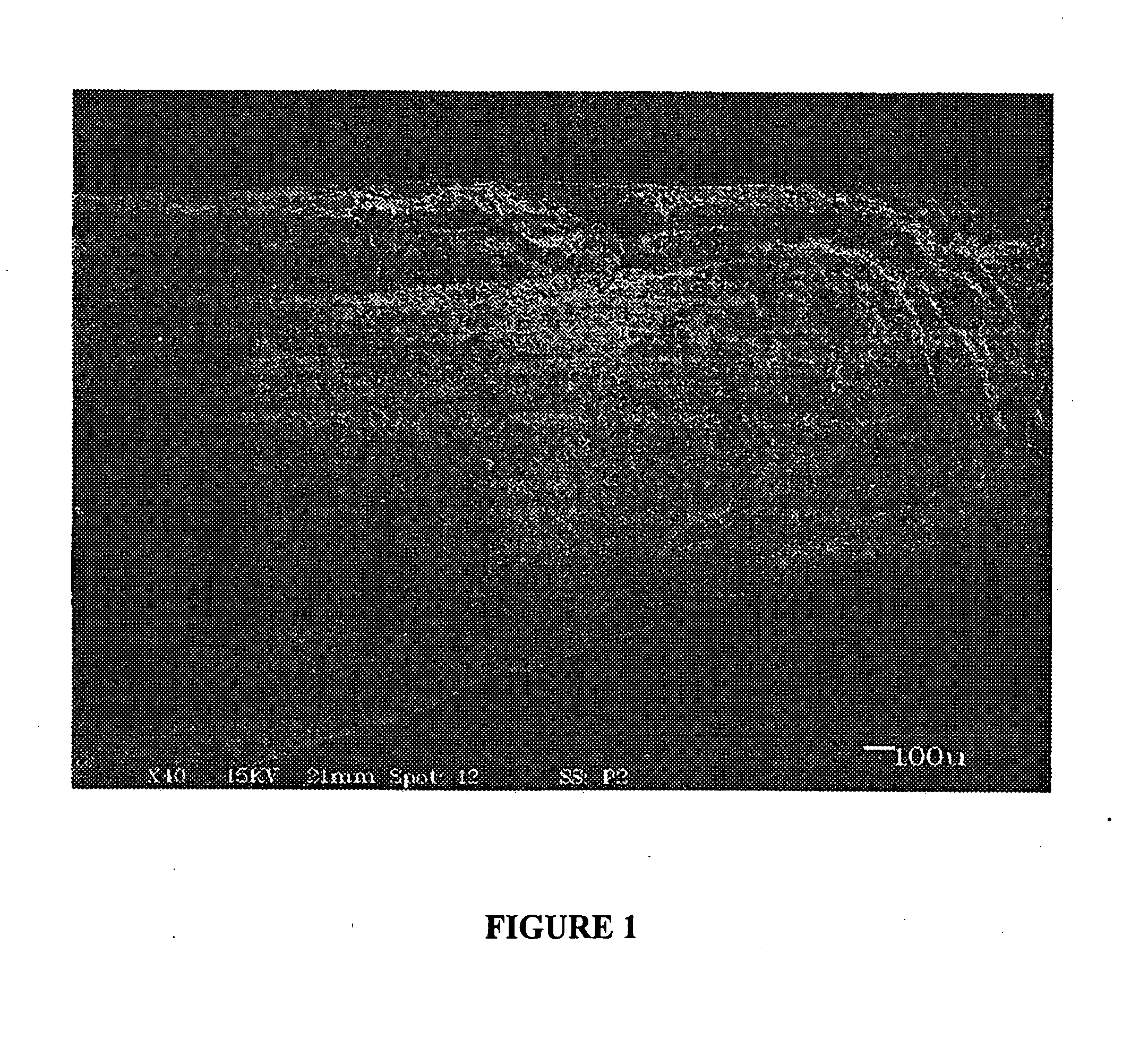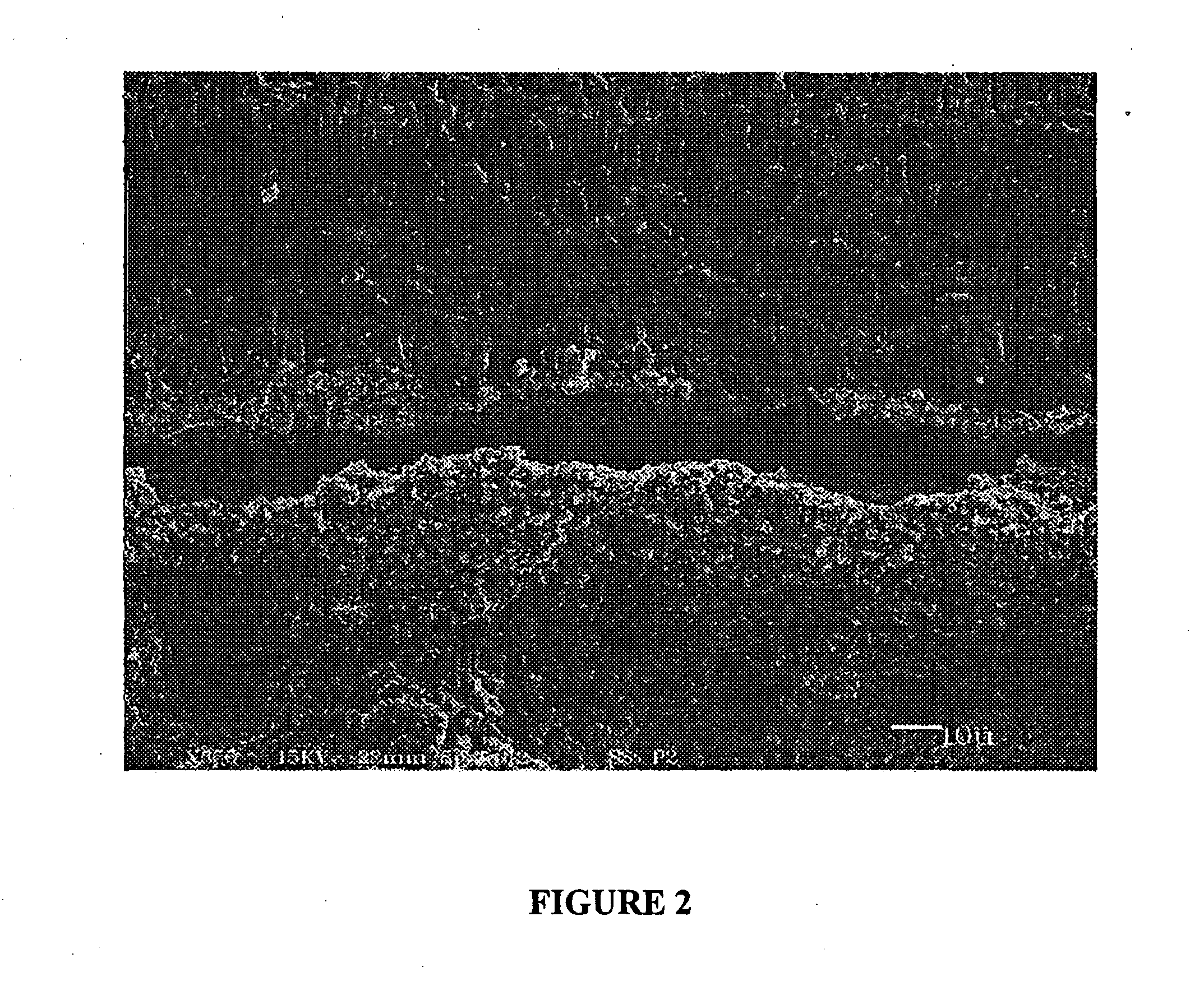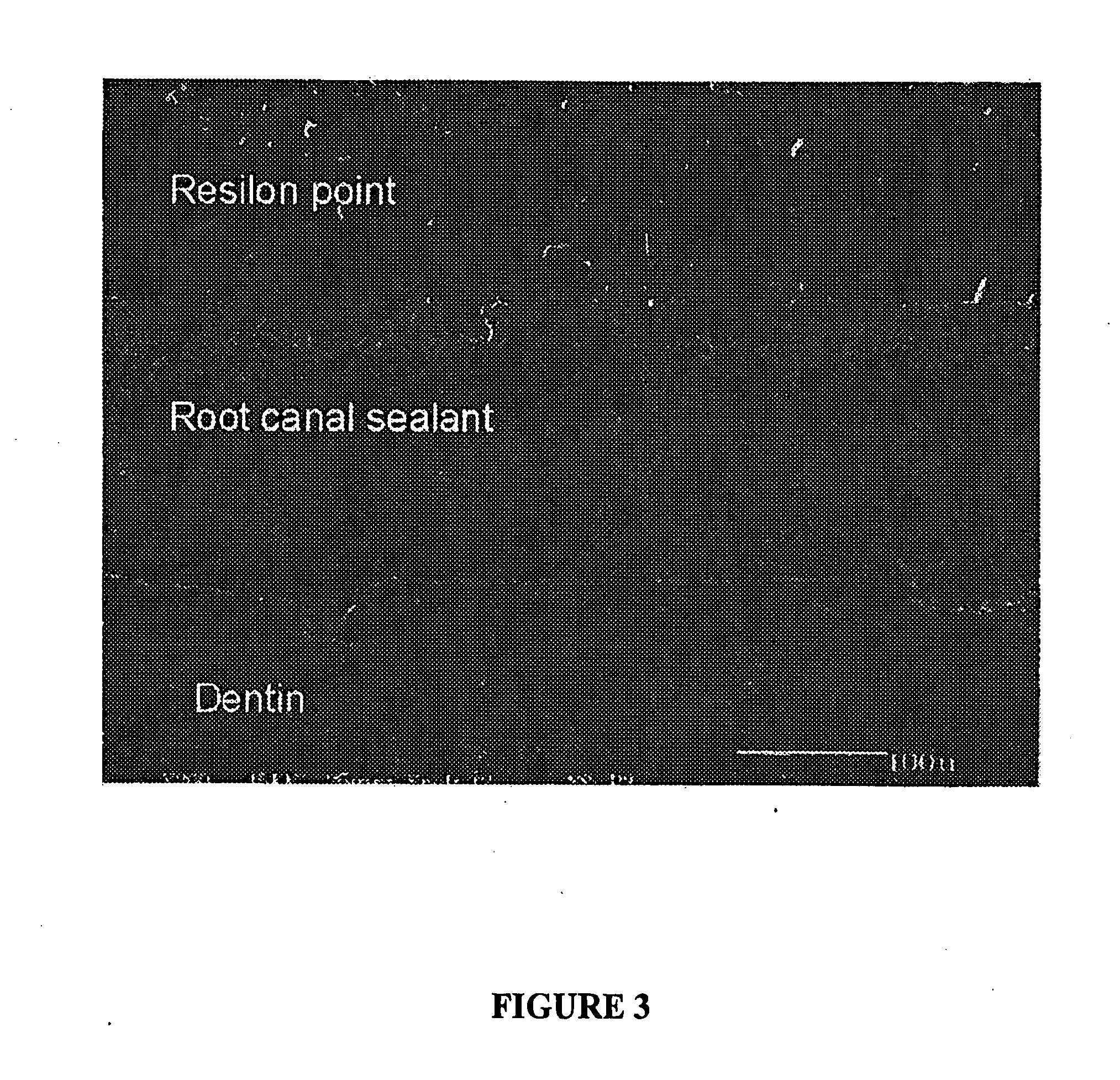Endodontic procedure using self-adhesive resin cements and sealers or self etching adhesives and chemically bondable obturators
a self-etching adhesive and endodontic technology, applied in the field of endodontics, can solve the problems of reducing the efficacy of root canal seals, still leakage, self-etching dental adhesives,
- Summary
- Abstract
- Description
- Claims
- Application Information
AI Technical Summary
Problems solved by technology
Method used
Image
Examples
example 1
Tapered Point Obturator Seating
[0042] An access cavity is opened in the crown of a tooth to expose the root canal, and the pulp tissue is removed. An instrument is used to clean and shape the root canal to a predetermined working length. The root canal is irrigated with bleach to disinfect and dissolve residual pulp tissue. The root canal is irrigated with ethylene diamine tetraacetic acid (EDTA) to demineralize the surface of root dentin to remove the smear layer, although this step can be eliminated if desired. The root canal is dried thoroughly with paper points. Selection is then made of an appropriate size obturator. A rubber stop is fitted on the distal end of the obturator at the working length. The obturator is inserted into the root canal, and the proper seating is verified by radiograph, and then the obturator is removed temporarily.
[0043] A self-adhesive sealer is introduced into the root canal, for example, by spinning the sealer into the root canal with a lentulo fill...
example 2
Post Obturator Seating
[0044] The protocol of Example 1 is repeated except that after the root canal is irrigated with bleach to disinfect and dissolve residual pulp tissue (again only optional), the upper portion of the root canal may be drilled to widen the root canal to accommodate the post.
example 3
Obturating Pellets by method of heat extrusion
[0045] Analogous to Examples 1 and 2, the root canal may be obturated with the use of obturator pellets which have been heated in a suitable device to allow the liquefaction and extrusion of the obturating material into the root canal, for example, RESILON™ pellets.
PUM
| Property | Measurement | Unit |
|---|---|---|
| Adhesivity | aaaaa | aaaaa |
Abstract
Description
Claims
Application Information
 Login to View More
Login to View More - R&D
- Intellectual Property
- Life Sciences
- Materials
- Tech Scout
- Unparalleled Data Quality
- Higher Quality Content
- 60% Fewer Hallucinations
Browse by: Latest US Patents, China's latest patents, Technical Efficacy Thesaurus, Application Domain, Technology Topic, Popular Technical Reports.
© 2025 PatSnap. All rights reserved.Legal|Privacy policy|Modern Slavery Act Transparency Statement|Sitemap|About US| Contact US: help@patsnap.com



